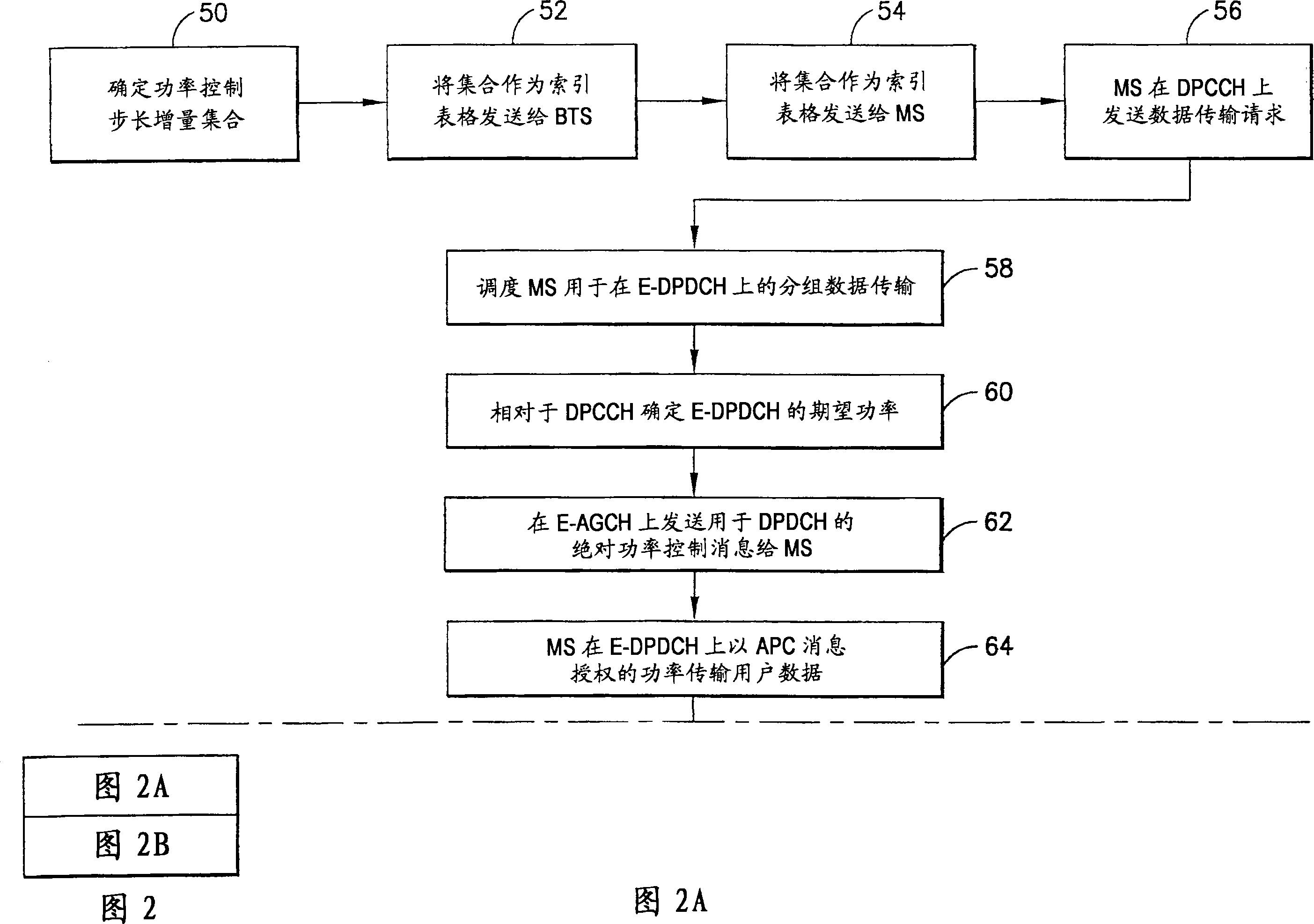Variable power control step sizes for high speed uplink packet access (HSUPA)
A technology of power control and step size, applied in transmission control/equalization, power management, network traffic/resource management, etc., and can solve problems such as slow link adaptation
- Summary
- Abstract
- Description
- Claims
- Application Information
AI Technical Summary
Problems solved by technology
Method used
Image
Examples
Embodiment Construction
[0019] As mentioned above, embodiments of the present invention relate to power control in wireless communications. In the above context, where Node B is allowed to use relative grants, some link adaptation speed is definitely lost when the step size is only 1 dB, as is the case in the prior art. For example, if the Node B wants the UE to increase the power by multiple dB, multiple control messages to the UE are required, each commanding it to increase by one step size. The signaling overhead associated with multiple messages compared to one message is an obvious waste of radio resources, so the time delay in the above architecture prevents radio resources from being allocated most efficiently and leads to potentially larger ineffective.
[0020] With reference to Fig. 1, the radio network controller RNC10 is connected on the node B30 (optionally, referred to as base transceiver station BTS here), and the node B is connected on the user equipment UE40 successively through the...
PUM
 Login to View More
Login to View More Abstract
Description
Claims
Application Information
 Login to View More
Login to View More - R&D
- Intellectual Property
- Life Sciences
- Materials
- Tech Scout
- Unparalleled Data Quality
- Higher Quality Content
- 60% Fewer Hallucinations
Browse by: Latest US Patents, China's latest patents, Technical Efficacy Thesaurus, Application Domain, Technology Topic, Popular Technical Reports.
© 2025 PatSnap. All rights reserved.Legal|Privacy policy|Modern Slavery Act Transparency Statement|Sitemap|About US| Contact US: help@patsnap.com



